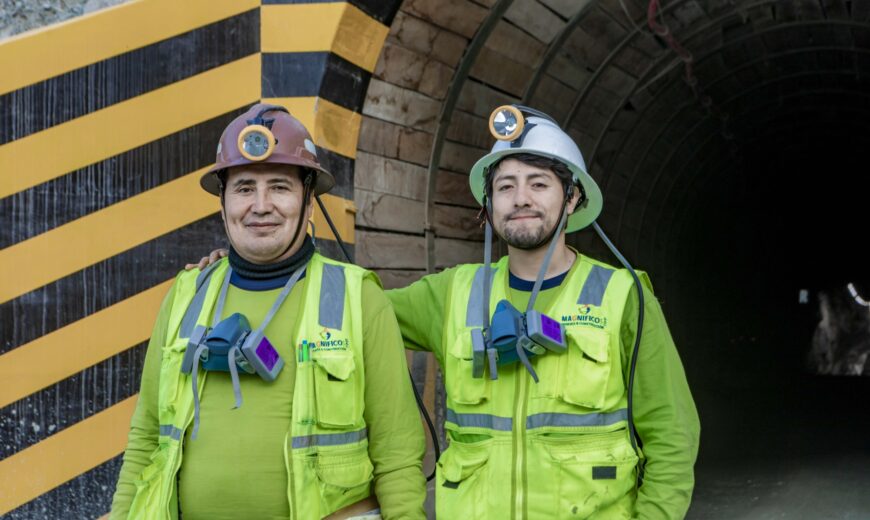Is it not better to use recycled gold rather than newly mined Fairtrade gold?
At Fairtrade, we respect the recycling of gold as a complementary approach that keeps the precious material already mined in circulation and gives it another chance to shine. But only 30% of the market for gold can be satisfied from such sources. This being said, we’d like to point out that the practice of recycling gold is not proven to reduce the negative impacts of primary mining on the environment or reduce human rights issues associated with extractive industries. Also there is no guarantee where the metal originally came from – you won’t know who was involved in the mining process or how it was extracted from the ground. Recycled gold can often be a route for smuggling gold or for money laundering and could be mis-labelled as recycled. It is therefore imperative to address the problems associated with gold mining. Fairtrade certified gold will provide direct developmental impacts for artisanal miners and improve conditions in what is traditionally a very hard industry. Fairtrade gives you certainty about the origin, about the people and the processes, there is an identity and a story to tell.
We are currently defining our approach to recycling Fairtrade gold in our ongoing revision of the Fairtrade Precious Metal Standard. We are aiming to allow recycling of Fairtrade gold at the refiner level if the Fairtrade origin can be clearly identified.
Why is Fairtrade gold only sourced from artisanal and small-scale mines (ASM)?
Fairtrade is about people and although most gold is sourced from large scale mines, the vast majority (an estimated 90%) of those working in gold extraction are engaged in ASM. An estimated 100 million people worldwide rely on artisanal and small-scale gold mining to support their families and communities. That’s the second largest sector in the world after agriculture.
The majority of small-scale miners are working in informal operations, making them vulnerable to exploitation. This is why Fairtrade works with small scale miners, because they represent a significant portion of the gold labour force and are most at risk for hazardous working conditions and creating widespread negative ecological impact.
Fairtrade seeks to work with and support ASM to secure sustainable livelihoods, combat poverty by creation of a value added and advice on how better protect their environment and health.
Is the use of toxic chemicals allowed in Fairtrade certified mines?
The issue of chemical use in ASM is a delicate balancing act. If chemical use were not permitted by Fairtrade standards, the vast majority of all artisanal miners would be excluded from the Fairtrade system. However, the standards set out a process to support artisanal mining organisations to apply good practice in the use of chemicals and to minimise the use of mercury and cyanide over time through responsible practices and technologies to mitigate impact on the environment and human health. The Fairtrade standards require miners to use a process and technology which ensure that mercury emissions are drastically reduced
How do you ensure that the Fairtrade standards have been met in certified mines?
We’re one of the most recognised standards globally for supporting improvements with artisanal and small-scale mines and understand empowerment as a key to improving the ASM situation.
FLOCERT, an independent third-party auditing body, verifies that all mines and the businesses buying and selling Fairtrade gold meet the Fairtrade Standards. FLOCERT hold the ISO 17065 accreditation to ensures autonomous, transparent and independent certification decisions, and their independence is checked by DAkkS, the German national accreditation body, during regular audits.
FLOCERT confirm during their audit that the applicable criteria are met, transactions are traceable and there is financial transparency with regards to receiving and spending the Fairtrade Minimum Price and Premium. There is a set of sanction measures to make sure the mines can correct and improve under the assistance of Fairtrade.
Does the Fairtrade Mark guarantee traceability?
Fairtrade Gold can be traced physically from the point of extraction in the mine through the refining process and into finished products. This is backed up by documentation of all transactions in the value chain between mines and licensed jewelers and is a process that is audited by FLOCERT, an independent third party. FLOCERT verifies that all mines and the businesses buying and selling Fairtrade gold meet the Fairtrade Standards. This includes processing the Fairtrade gold segregated from other sources of metal.
It means consumers know that the gold in products carrying the Fairtrade Gold Stamp is fully traceable and comes from a socially and environmentally responsible source which has economic benefits for miners.

